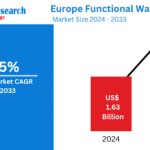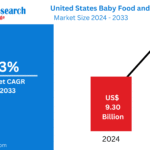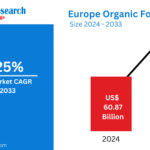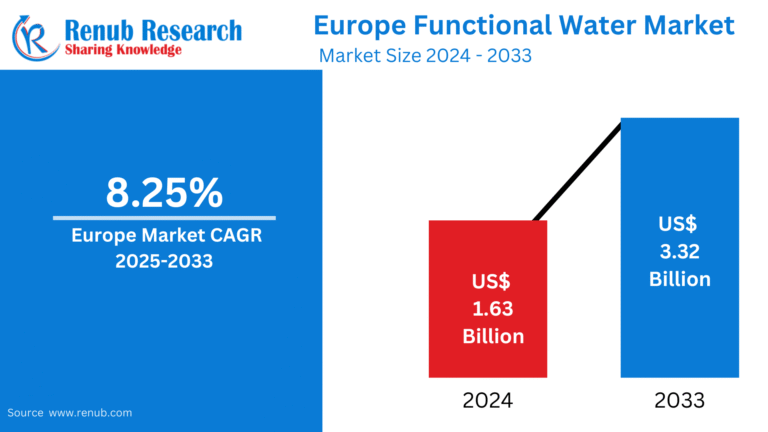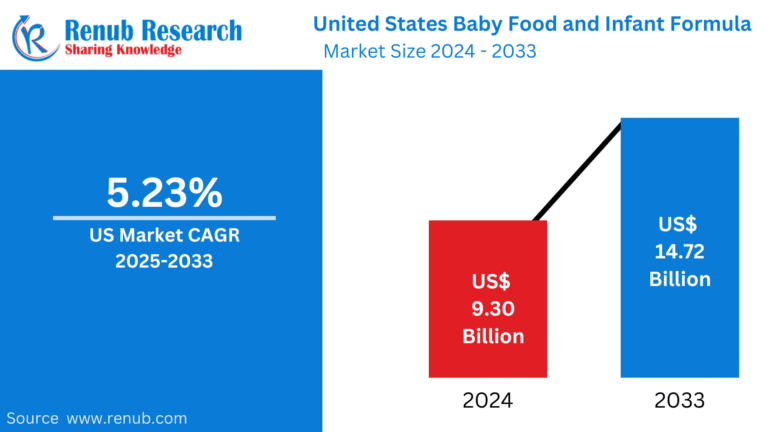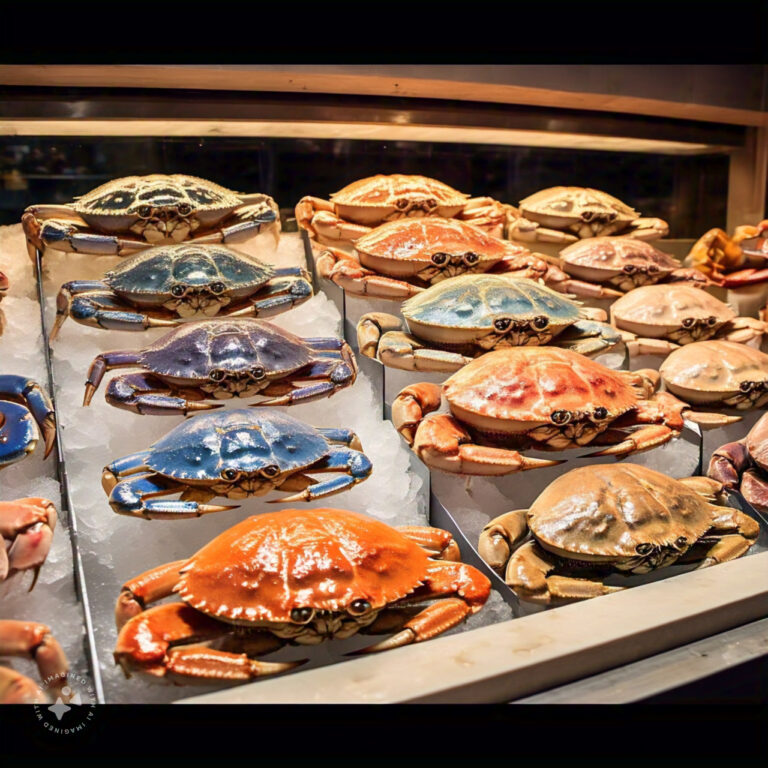Global Crab Market Size, Share, Forecast 2025-2033: Industry Trends, Growth, and Competitive Analysis
Market Overview
The Global Crab Market was valued at USD 11.37 billion in 2024 and is expected to reach USD 19.3 billion by 2033, growing at a CAGR of 6.05% during 2025-2033. The market is driven by the increasing consumer demand for seafood, the rising popularity of premium marine products, and expansion in sustainable aquaculture practices. Furthermore, improvements in international logistics and a growing emphasis on health-conscious diets have significantly contributed to the proliferation of crab products globally.
Key Market Drivers
1. Rising Demand for Nutritious Seafood
Crabs are recognized as a rich source of protein, omega-3 fatty acids, and essential minerals such as selenium and zinc. As consumers become more health-conscious, their preference for such seafood has risen. Additionally, rising incomes and growing urbanization have further fueled seafood consumption in both developed and emerging markets.
2. Expansion of Sustainable Aquaculture
Technological advancements and investments in controlled aquaculture systems have enabled the farming of various crab species with improved efficiency and sustainability. These methods reduce environmental impact and ensure year-round supply. In 2024, the UN-supported NOAA Guidelines for Sustainable Aquaculture set global benchmarks for responsible seafood farming.
3. Strengthening Global Logistics and Trade Agreements
With cold-chain logistics becoming more robust, transporting live, frozen, and processed crab has become feasible over longer distances. Trade agreements like the Comprehensive and Progressive Agreement for Trans-Pacific Partnership (CPTPP) have eliminated tariffs, increasing affordability and boosting imports across member countries.
Market Challenges
1. Overfishing and Declining Wild Populations
Many crab species face overexploitation, leading to declining wild stocks and strained ecosystems. Regulatory efforts are intensifying, but balancing conservation with high demand remains a persistent challenge.
2. Volatility in Prices and Trade Barriers
Seasonal availability, climate fluctuations, and trade restrictions (like tariffs and embargoes) can destabilize crab pricing. Moreover, geopolitical tensions may also disrupt supply chains, affecting market reliability.
New Publish Reports
- United States Frozen Food Market Size and Share Analysis – Growth Trends and Forecast Report 2025-2033
- United States Olive Oil Market Size and Share Analysis – Growth Trends and Forecast Report 2025-2033
- North America Smart Home Security Camera Market Size and Share Analysis – Growth Trends and Forecast Report 2025-2033
- United States School Furniture Market Size and Share Analysis – Growth Trends and Forecast Report 2025-2033
Market Segmentation Analysis
By Type
• Blue Crab
Favored for its tender and sweet flavor, the blue crab is primarily sourced from the Atlantic Ocean and Gulf of Mexico. The United States and Indonesia dominate this market. Demand is high in luxury dining sectors and seafood specialty outlets.
• Chinese Mitten Crab
Regarded as a delicacy in China, particularly during the autumn months, the mitten crab market is niche but high-value. Domestic farming in China and exports to neighboring countries continue to thrive.
• Gazami Crab
Known as the Japanese swimming crab, it has a firm texture and high meat yield. Countries like China, Vietnam, and South Korea dominate its production and exports. Availability in both fresh and frozen forms has made it a popular export commodity.
• Other Crab Types
Includes stone crabs, Dungeness crabs, and snow crabs, each with its own market base depending on geography, cuisine, and availability.
By Form
• Frozen Crab
Frozen crab has seen a surge in global demand, especially in Europe and North America, owing to its longer shelf-life and ease of transport. Retailers and foodservice providers increasingly prefer this format.
• Canned Crab
Canned crab products are widely consumed due to their convenience and ready-to-eat nature. They are commonly used in pasta, salads, and soups, with North America and Europe being the largest markets.
• Other Forms
Includes live crabs and ready-to-cook items such as pre-marinated or pre-cooked products. Demand is growing in urban and metropolitan regions across Asia-Pacific and Latin America.
Regional Market Analysis
United States
The U.S. is both a leading producer and importer of crabs. Blue crabs from the Chesapeake Bay and Dungeness crabs from the Pacific Northwest dominate the market. Innovations like panko soft-shell crab have broadened product offerings.
Germany
German consumers are shifting toward high-protein, low-fat seafood, with crab imports seeing significant growth. Retailers are diversifying their frozen and canned seafood selections to meet this new demand.
China
Home to the hairy crab delicacy, China leads in both consumption and exports. The surge in middle-class population and luxury seafood demand is boosting growth. Promotions during Lunar New Year, like Hema’s ready-to-eat king crab, are helping drive premium sales.
Brazil
With a rich coastline, Brazil’s crab sector is expanding, supported by domestic demand and export potential. Japan’s removal of Zoosanitary Certificate requirements has enhanced Brazil’s export capability for live ornamental crabs.
South Africa
South Africa’s crab demand is rising with population growth, aquaculture expansion, and seafood tourism. Government projections call for 18% annual aquaculture growth to meet future seafood needs.
Saudi Arabia
Due to limited local production, Saudi Arabia depends heavily on imports. Upscale restaurants, tourism, and partnerships such as SALIC’s stake in NAQUA, are boosting infrastructure and training in aquaculture.
Global Trade & Logistics Insights
Trade agreements like CPTPP and robust cold-chain development have facilitated efficient crab export-import flows. Countries such as Indonesia, Vietnam, and the U.S. have emerged as key suppliers, while Japan, Canada, and the UAE remain major importers.
Competitive Landscape
Key Players and Strategic Developments
| Company Name | Key Developments |
| Bumble Bee Foods LLC | Expanded canned seafood offerings with premium crab lines |
| Supreme Crab & Seafood Inc. | Enhanced frozen crab exports to Europe and the Middle East |
| Maine Lobster Now | Introduced nationwide delivery of premium crab dishes |
| Millennium Ocean Star Corporation | Partnered with retailers in Southeast Asia for frozen crab |
| Phil-Union Frozen Foods Inc. | Launched pre-cooked crab legs for retail markets |
| JM Clayton Seafood Company | Focused on sustainable wild crab harvesting |
| RGE Agridev Corporation | Invested in aquaculture farms across Southeast Asia |
| Siam Canadian Group Limited | Boosted logistics and cold-chain solutions for crab exports |
| Handy Seafood | Developed gourmet crab cake product lines for U.S. retail |
Key Questions Answered in the Report
✅ Market Overview & Growth
- What is the current size and projected growth of the global crab market from 2025 to 2033?
- What are the main growth drivers and trends in the crab industry?
✅ Market Segmentation
- Which crab types (Blue, Gazami, etc.) dominate the market?
- What formats (frozen, canned, other) are in highest demand?
✅ Regional Insights
- Which countries lead in production, consumption, and export of crab?
- How are emerging economies like Brazil, South Africa, and Saudi Arabia shaping the market?
✅ Trade & Logistics
- What role do international trade agreements and cold-chain logistics play in market expansion?
✅ Challenges & Barriers
- What are the key risks such as overfishing, trade restrictions, and price volatility?
✅ Competitive Landscape
- Who are the major players in the market and what are their strategies?
Report Coverage
| Feature | Details |
| Base Year | 2024 |
| Historical Period | 2021–2024 |
| Forecast Period | 2025–2033 |
| Market Segments | Type, Form, Country |
| Countries Covered | 25+ |
| Companies Analyzed | 9 major players |
| Customization Scope | 20% Free |
| Post-Sale Support | 1 Year |
| Delivery Format | PDF, Excel (PPT/Word on request) |
Need Help?
Talk to our expert analysts to customize your report, add specific countries or companies, or dive deeper into specific segments like trade data, production insights, or market entry strategies.
📧 Email: info@renub.com
📞 Call: USA: +1-478-202-3244 | INDIA: +91-120-421-9822




